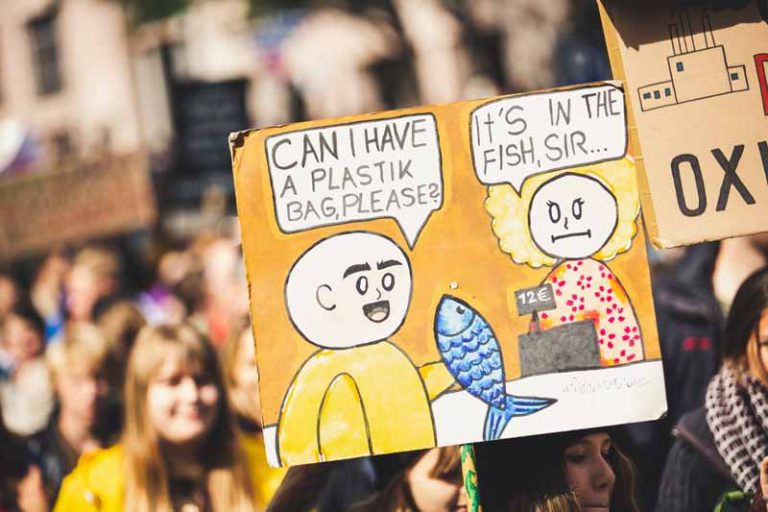author
Jacques Lawinski
post
- 13/07/2023
- No Comments
- Ideas, Politics
share
How do businesses and government deal with protests and demands for change? What is their strategy, and how do they go about maintaining their power and their position, throughout and despite the protests? And what about dialogue: how does that work, do meetings between activists and perpetrators often lead to change?

There are examples where activism has led to meaningful, systemic and long-lasting change. These examples, however, are few and far between. Western societies have known about the climate crisis at a societal level for at least 50 years, and in some cases longer. Environmental damage and conservation movements have existed for many hundreds of years. Yet, the same companies continue to destroy the environment, and governments around the world have proven themselves to be inadequate and insufficient for confronting the systemic problems leading to global ecosystem collapse. Dialogues at 27 yearly Conference of the Parties (COPs) so far, have led to zero reductions in net global carbon dioxide emissions.
So, how do companies deal with activists to keep doing the same thing? How do they neutralise the threats posed to their interests: making profit, assuring production of goods and services, and maintaining their power within the current economic and social system? This article explores the strategies and classifications used by companies, and increasingly by Governments worldwide to reduce threats posed by activists with valid claims for social and environmental justice.
The types of activists and how to deal with them
Ronald Duchin was a founding member of MBD, a company hired by the agriculture industry, the tobacco industry, the chemical industry, and many other non-declared clients, due to the secretive nature of the company. “Get Government Off Our Back” and “Regulatory Revolt Month” are some of the major campaigns brought about by the group in the US, always in favour of free and unbridled enterprise, and with the aim of shutting down all social and environmental activist movements.
In 1991, he gave a speech to the National Cattleman’s Association in the United States, entitled, “Take An Activist Apart and What Do You Have?”. In this speech, he described four groups of activists, and the characteristics of each group. This was the basis for the strategic work that MBD did with large companies to neutralise the threats posed by activist groups “who want to change the way your industry does business – either for good or bad reasons.” These four groups are the radicals, the opportunists, the idealists and the realists.
1. The Radicals
Those who “want to change the system,” and “can be extremist or violent.” These people are involved in specific causes because of underlying socio-economic or political motives, hate business and enterprise, and seek larger systemic transformation than the particular struggle they are fighting. With them, there is nothing to be done, according to Duchin. They must be isolated from the rest of the group so they lose their credibility.
2. The Opportunists
Those who are looking for “visibility, power, followers, and perhaps even employment.” They move from cause to cause, and are quick to change position or move to the forefront of a potential change in the following. If the society changes its opinion, they will change their stance to return to the front of the pack. They seek personal gain, and look for issues with the greatest potential for themselves. With these people, you must give them the impression of a partial gain or win. They are not interested in reality, but in their following, so if “the opportunist is provided the chance to be a participant in that final determination of policy, he/she has his/her victory, and he/she is satisfied.”
3. The Idealists
These are the moral and principled people, attracted to causes because they care about the outcomes for people and the planet. They are “usually altruistic, emotionally involved, naïve, and generally unaware of the unforeseen consequences.” They “want a perfect world and find it easy to brand any product or practice which can be shown to mar that perfection as evil.” They are credible and believed in the media and by politicians, because of their altruism and values. However, this makes them hard to deal with. “Idealists must be cultivated and one should respect their decision. […] They must be educated.” For Duchin, this means showing them that their opposition to a cause will cause harm to others and is not ethically sustainable in the long term. Once an idealist has realised the consequences of their position, they will be converted to a realist.
4. The Realists
The group of people to which companies should interact with the highest priority. They are “pragmatic, not interested in radical change, can live with trade-offs, and understand the consequences.” To respond to their demands, business must “meet with them, listen to their concerns, and be open that the industry’s agreed-upon solution may not be the best.” The solution agreed upon by the realists is often the one that is adopted by all members, if business is part of the decision-making process. If industry is not part of this process, then the radicals and idealists can gain more strength.

The main strategy is to listen to the realists, educate the idealists to convert them to realists, and ignore the radicals and opportunists at the beginning. These groups can be converted to believe in the position of enterprise and industry, with small adjustments to suit the demands of the realists. The radicals only have power when they are supported by the other groups: when they are alone, they lose their public credibility, so they must be isolated. The opportunists can be invited to join in the final policy resolution, as long as they have a moment to be in the spotlight. The issue will be resolved with the least fuss and the least change for the industry involved.
We see this strategy deployed all the time in relation to concerns regarding the environment and social justice. Protests occur, and the organisation in question will call for the protests to stop (isolate the radicals), put out their own statement with strong ethical language (educate the idealists), and then invite the realists of the group to a meeting to discuss their concerns (convert the realists). At the end, the opportunists get a photo with the high officials involved (swallow the opportunists), and the issue goes away, with very little change.
This was the strategy with the Save Passenger Rail protesters in New Zealand recently, too, in regard to the Government’s lack of climate action. Their actions were quickly denounced in the media as being a public nuisance, dangerous, and examples were found of people in their cars who missed appointments or were otherwise inconvenienced by the movements. The radicals were isolated from public opinion, so they lost their credibility for their cause. Showing that hard-working kiwis “just trying to get to work to feed their kids” were disrupted by the action played on the empathetic nature of the idealists. Meetings were had with the realists; the opportunists had a photo…
But, think of the disruption climate change will cause. Cyclone Gabrielle was disruptive. People on the streets for a few hours is nothing compared with the disruption climate change is causing, and will continue to cause, without serious measures taken by Governments and businesses worldwide. The counter-strategy was so effective that the protesters never really got to express their views to the public and explain the situation. Neutralised and the conflict brought indoors, to private meetings, the whole issue went away very quickly. The second time the protesters tried their action, the Government refused to meet with them again: “you’ve been unfaithful,” they said. “You’re disrupting our lives and our cities.” Instant de-legitimising and loss of credibility for the protesters. The realists were portrayed as no longer being realistic, but being radicals: isolating them all from the larger society once again neutralised the threat.
You're reading an article on Plurality.eco, a site dedicated to understanding the ecological crisis. All our articles are free, without advertising. To stay up to date with what we publish, enter your email address below.
Dialogue as a means to inaction
At the beginning of the 1980’s in the United States, the calls from campaigners and social and environmental activists to regulate business action and for companies to adopt responsible business practice became louder and louder. To counteract these calls, industries in the US needed a new way of dealing with this, to protect their interests, guard against offensive government regulation, and neutralise the criticisms coming from various corners of the society.
As a result, companies joined in on the “ethical communication” bandwagon that was beginning to take hold at the time. Instead of fighting against ethical communication and openly promoting their profit-based interests, large companies realised they could be the champions of ethical communication. They could see their critics not as adversaries, but as partners, who needed to be brought to the table to bring about resolution to the problems they pointed out. Instead of fighting opposition, they could just swallow them up.
What this actually meant was that dialogues needed to be had, so that the companies could convince the critics that the position of business and industry was just, fair, socially motivated, and had everyone’s best interests at heart. They knew that they had to identify the realists amongst the critics, and talk with them to bring about solutions. Jean-Claude Buffle writes, in Dossier N… Comme Nestlé, “for them (the business), dialogue was not a way to open oneself up to the other, it was a strategy, another method to wage their war.” The goal of these discussions was not to exchange or negotiate, but to “convince people of their (business) point of view and motivate them to act for the company’s interests.”
In his book detailing the genealogy of authoritarian liberalism, Grégoire Chamayou notes six different virtues of dialogue as a strategy to maintain and guard power (p. 129-130). These are:
- Intelligence-gathering: having a dialogue with opposants means that companies can figure out potential problems before they reach the public arena and cause harm to the company’s image in the public eye. Companies can understand how the campaigners think, what’s on their minds, and what their future projects might be.
- Pre-emptive blocking: in the 1980’s, Nestlé released, without being asked to, a series of pamphlets detailing the rules of conduct for activists. These included always contacting the company directly before any other action. This approach meant that government, media, and the general public would not get a chance to hear the complaints, and everything could be resolved in private. Activists are therefore restrained of their primary force: public opinion and support.
- Diversion: Instead of discussing what opposants don’t like about a company and their current practice, companies can set up meetings with critics to discuss what the future might look like: that way, the company retains their power and can point activists towards positive actions they can take to create the future they want. The problem at hand, in the present, is diverted from their attention, and in its place is a blue-sky future planning which may or may not even happen.
- Absorption: According to Bart Mongoven, another founding member of the MBD consulting company we discussed earlier, in a document released by Wikileaks, enterprises should look for the most realist of organisations opposing their action, and then invite them to the table, and offer them, in exchange for the resolution of the problem, power, glory and money. To do this, the company needs to treat the adversary with respect, as one should do with realists, and even offer them falsely sensitive information: gain their trust. Once the organisation accepts, they will convince the public that the problem is solved. One simple deal means that the adversary is brought over to the company’s side, and integrated into their fold. For example, organisations could offer “ecological certifications” to companies in exchange for power and money for their causes.
- Disqualification: Dialogues with companies or governments and their opponents are always selective. By reinforcing their commitment to consensus, enterprises can label and therefore disqualify groups who they deem threats as being confrontational, unwilling to compromise, indignant, and anti-democratic. The opposants are therefore discredited, and presented as irrational, unreasonable, and ultimately, too radical.
- Legitimation: by having a dialogue with a large NGO or other organisation respected by the general public, companies hope to improve the image of their brand. NGOs have little capital resource, but large reputations; companies can often have a bad reputation, but lots of capital (money, infrastructure, property, land, etc.). By forming a partnership, the reputation and money can flow in ways controlled by the corporation, benefitting the company at a relatively low cost in the form of a donation to the NGO.
When I first read these, I could think of so many examples where this has happened. It was obvious upon reflection, but without this list I could not have identified what was going on. These are the strategies used by business and government to avoid confronting real problems pointed out by activists, and to continue, in many cases, perpetuating social issues and destroying the environment.

Activist strategies for countering the counter-attacks
Based on the theories above, here are some ideas for ways that activists and campaign organisers can counter or disarm the strategies of their adversaries:
- Strength comes with people. If you have a large following, or have the opinion of the general public behind you, you’re much more likely to be able to push for lasting and meaningful change. Try to never be seen as ‘radicals’ – you don’t want to be isolated from the group and therefore ineffective at bringing people onto your side.
- Work out where you and your group sit, regarding the four activist personalities. Make sure you have a way to work together, rather than separately, to cover the weaknesses of the other people. For example, radicals and realists need to work together, each pushing the other in the right direction. Idealists and opportunists can also work together, making sure the movement has the right balance of image and leadership, and values and principles.
- Avoid dialogue unless it comes with real opportunities to change. If you’re invited to a meeting where someone will “listen to your arguments”, tell your story to the media instead. Explain that listening is a codeword for ignoring. Tell people about the strategies of companies to avoid confronting the problem. Paint the company as uncooperative and unwilling, before they do the same to you after your meeting.
- Be wary of legitimation. Many companies want to associate themselves with organisations who stand for values, whilst continuing damaging business practices. They might think that giving some money to a not-for-profit group or community organisation will absolve them of the responsibility for their actions, but this is not the case. Point it out.
- Always keep things in public. Don’t do things in private: private meeting and cordial email conversations mean you lose your power and effectiveness.
- And, as always, be informed and knowledgeable about your issue. You won’t win anyone over if you don’t know enough about the topic and cannot put forward convincing arguments for change.
Do you have a story of activism, or another method for effective activism? Let us know in the comments below, or send us a message at submissions@plurality.eco if you’d like to tell your story.
It took more than 30 hours of research and writing to produce this article, which will always be open and free for everyone to read, without any advertising.
All our articles are freely accessible because we believe that everyone needs to be able to access to a source of coherent and easy to understand information on the ecological crisis. This challenge that confronts us all will only be properly addressed when we understand what the problems are and where they come from.
If you've learned something today, please consider donating, to help us produce more great articles and share this knowledge with a wider audience.
Why plurality.eco?
Our environment is more than a resource to be exploited. Human beings are not the ‘masters of nature,’ and cannot think they are managers of everything around them. Plurality is about finding a wealth of ideas to help us cope with the ecological crisis which we have to confront now, and in the coming decades. We all need to understand what is at stake, and create new ways of being in the world, new dreams for ourselves, that recognise this uncertain future.

